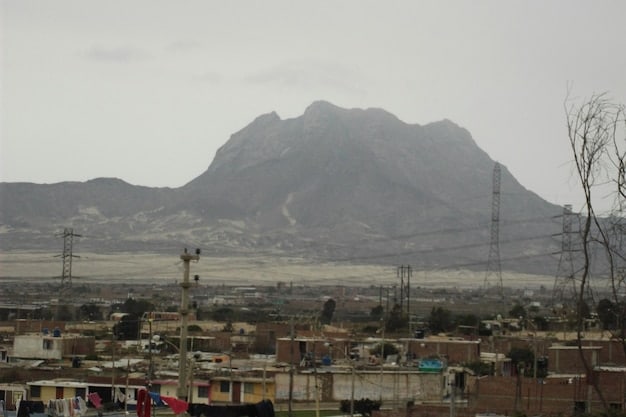US Military Presence in Afghanistan After Withdrawal: Implications

The implications of the US military presence in Afghanistan after the withdrawal include potential regional instability, the resurgence of extremist groups, and questions about human rights and governance.
The withdrawal of US military forces from Afghanistan has understandably raised concerns globally. But what are the implications of the US military presence in Afghanistan after the withdrawal? This article breaks down the complex aftermath, providing insights into the potential consequences for the region and beyond.
Understanding the Context of the US Withdrawal
The US military withdrawal from Afghanistan marked the end of a two-decade-long military intervention. Understanding the context surrounding the withdrawal is crucial to grasping the potential implications of the continued, albeit reduced, US presence in the country and the broader region.
This section will explore the key factors that led to the withdrawal decision, the timeline of events, and the immediate consequences observed in Afghanistan.
Historical Background
The US military intervention in Afghanistan began in 2001, following the September 11 attacks. The initial objectives were to dismantle al-Qaeda and remove the Taliban regime, which harbored the terrorist group. Over the years, the mission evolved to include nation-building, counter-insurgency operations, and support for the Afghan government.
Despite significant investment and effort, the situation in Afghanistan remained complex and challenging, leading to a growing debate within the US about the purpose and sustainability of the military presence.
Key Drivers of the Withdrawal Decision
Several factors contributed to the US decision to withdraw from Afghanistan:
- Prolonged Conflict: The war in Afghanistan became the longest in US history, leading to increasing public fatigue and calls for an end to the military involvement.
- Negotiations with the Taliban: The US engaged in direct negotiations with the Taliban to seek a political settlement and facilitate the withdrawal process.
- Shifting Priorities: The US shifted its foreign policy priorities towards addressing emerging threats like China and focusing on domestic issues.
- Cost and Casualties: The financial cost of the war in Afghanistan was substantial, and the loss of American lives continued to weigh heavily.
The withdrawal decision was a complex calculation involving political, strategic, and economic considerations.
In conclusion, the withdrawal was a complex decision influenced by factors such as the war’s length, negotiations with the Taliban, evolving US priorities, and the costs involved. Understanding this context is essential for assessing the implications of the US military’s continued presence in Afghanistan.
The Security Vacuum and Rise of Extremist Groups
The US military withdrawal from Afghanistan inevitably created a security vacuum that various actors, including extremist groups, sought to exploit. This section examines the potential implications of the security vacuum and the rising influence of extremist organizations in the region.
We delve into the specific threats posed by these groups, their impact on regional stability, and the challenges faced by Afghan security forces in maintaining control.

Resurgence of the Taliban
The Taliban swiftly capitalized on the US withdrawal by launching a widespread offensive that led to the collapse of the Afghan government.
The group’s rapid territorial gains and control over key cities raised concerns about the future of Afghanistan under Taliban rule.
Emergence of ISIS-K
Another concerning development was the emergence and expansion of the Islamic State of Iraq and Syria – Khorasan Province (ISIS-K). This group, affiliated with the global ISIS network, has been responsible for numerous attacks in Afghanistan and poses a significant threat to regional security.
ISIS-K’s presence complicates the security landscape and challenges the Taliban’s ability to maintain stability.
Impact on Regional Stability
- Cross-border Terrorism: The rise of extremist groups in Afghanistan increases the risk of cross-border terrorism, potentially destabilizing neighboring countries.
- Refugee Crisis: The ongoing conflict and instability could trigger a new wave of refugees seeking safety in neighboring countries, straining their resources and creating humanitarian challenges.
- Geopolitical Competition: The security vacuum in Afghanistan could intensify geopolitical competition among regional powers seeking to exert influence and protect their interests.
The security situation in Afghanistan has far-reaching implications for regional stability, requiring coordinated efforts to address the challenges posed by extremist groups.
In conclusion, the US military withdrawal has created a security vacuum that extremist groups such as the Taliban and ISIS-K are exploiting. This poses significant threats to regional stability through cross-border terrorism, refugee crises, and increased geopolitical competition.
Economic Consequences for Afghanistan
The US military presence in Afghanistan had significant economic implications for the country, both positive and negative. The withdrawal has further exacerbated existing economic challenges and created new uncertainties for the Afghan people.
This section explores the potential economic consequences of the withdrawal, including the impact on aid, investment, and employment.
Decline in Foreign Aid
Afghanistan heavily relied on foreign aid to finance its budget, infrastructure projects, and social programs. The US withdrawal has led to a significant decline in foreign aid, leaving the Afghan government with limited resources to address pressing economic and social needs.
The reduction in aid could have severe consequences for the country’s development prospects and could exacerbate poverty and inequality.

Impact on Investment
The ongoing instability and security concerns in Afghanistan have deterred foreign investment, further weakening the country’s economy.
Investors are wary of putting their money into a country where security is uncertain and governance is weak. This lack of investment hinders economic growth and job creation.
Unemployment and Poverty
The withdrawal has led to widespread job losses, particularly in sectors that relied on the US military presence, such as construction, logistics, and security.
- Increased Poverty: The rising unemployment rate has pushed more Afghans into poverty, making it difficult for them to meet their basic needs.
- Brain Drain: Many skilled professionals and educated Afghans have left the country in search of better opportunities, further depleting the country’s human capital.
- Economic Instability: The economic consequences of the withdrawal could lead to further instability and social unrest.
Addressing the economic challenges facing Afghanistan requires a comprehensive approach that includes attracting foreign investment, creating jobs, and providing social safety nets for the most vulnerable.
In conclusion, the US military presence in Afghanistan had various economic consequences for the country, including a decline in foreign aid, reduced investment, and increased unemployment and poverty. A comprehensive approach is needed to address these challenges and promote sustainable economic development.
Geopolitical Implications for Regional Players
The US military withdrawal from Afghanistan has had significant geopolitical implications for regional players, including neighboring countries and major powers with interests in the region.
This section analyzes the potential implications of the withdrawal for regional geopolitics, including the shifting balance of power, the role of neighboring countries, and the involvement of major powers.
Shifting Balance of Power
The withdrawal has altered the balance of power in the region, creating opportunities for some countries to expand their influence while posing challenges for others.
Regional powers like China, Russia, and Iran are seeking to fill the vacuum left by the US departure.
Role of Neighboring Countries
Neighboring countries like Pakistan, Iran, and Uzbekistan have a direct stake in the stability of Afghanistan due to their shared borders and economic ties.
- Security Concerns: These countries are concerned about the potential spillover of instability and extremism from Afghanistan.
- Economic Opportunities: They also see opportunities for economic cooperation and trade with Afghanistan.
- Diplomatic Engagement: Neighboring countries are actively engaging with the Taliban to promote stability and protect their interests.
The engagement of neighboring countries will play a crucial role in shaping the future of Afghanistan.
Involvement of Major Powers
Major powers like China and Russia have been increasing their involvement in Afghanistan, seeking to protect their interests and promote their geopolitical agendas.
China is interested in Afghanistan’s natural resources and its potential role in its Belt and Road Initiative.
Russia seeks to prevent the spread of extremism and maintain its influence in Central Asia.
In conclusion, the US military presence in Afghanistan has altered the balance of power in the region, creating opportunities for neighboring countries and major powers to increase their involvement. China and Russia seek to expand their influence and protect their interests in the region.
Human Rights and Governance Concerns
The US military withdrawal from Afghanistan has raised serious concerns about human rights and governance in the country, particularly for women and minorities.
This section explores the potential implications of the withdrawal for human rights and governance, including the treatment of women, the protection of minorities, and the state of democratic institutions.
Treatment of Women
The Taliban’s return to power has sparked fears about the erosion of women’s rights in Afghanistan.
During their previous rule in the 1990s, the Taliban imposed severe restrictions on women’s education, employment, and freedom of movement.
The international community is closely monitoring the Taliban’s treatment of women to ensure that their rights are protected.
Protection of Minorities
Afghanistan is a diverse country with a number of ethnic and religious minorities, including Hazaras, Tajiks, and Sikhs.
These minorities have historically faced discrimination and persecution.
The US withdrawal has raised concerns about the protection of minorities and their ability to exercise their rights.
State of Democratic Institutions
The collapse of the Afghan government has dealt a severe blow to the country’s democratic institutions.
The Taliban’s governance model is based on Islamic law, which may not be compatible with democratic principles.
The international community is urging the Taliban to establish an inclusive government that respects human rights and the rule of law.
In conclusion, the treatment of women, the protection of minorities, and the state of democratic institutions are major sources of concern following the US military withdrawal. It is crucial for the international community to monitor the situation closely and advocate for the respect of human rights and the establishment of inclusive governance.
Long-Term Strategies for Regional Stability
The US military withdrawal from Afghanistan requires a shift towards long-term strategies that prioritize regional stability, diplomatic engagement, and humanitarian assistance.
This section outlines potential long-term strategies for promoting regional stability, addressing the root causes of conflict, and supporting the Afghan people.
Diplomatic Engagement
Diplomatic engagement with the Taliban and other regional actors is essential for promoting stability and preventing a resurgence of conflict.
The international community should engage in a constructive dialogue with the Taliban, setting clear expectations for human rights, governance, and counter-terrorism.
Regional forums and initiatives can also help to foster cooperation and address shared challenges.
Humanitarian Assistance
Providing humanitarian assistance to the Afghan people is crucial for alleviating suffering and preventing a humanitarian crisis.
- Food Security: The international community should provide food aid to address widespread hunger and malnutrition.
- Healthcare: Supporting healthcare programs is essential for ensuring access to basic medical services.
- Education: Investing in education can help to empower Afghan youth and build a more prosperous future.
Humanitarian assistance should be delivered in a coordinated and transparent manner to ensure that it reaches those who need it most.
Development Assistance
Long-term development assistance is needed to support sustainable economic growth and improve the living standards of the Afghan people.
Investing in infrastructure, agriculture, and education can help to create jobs and opportunities for Afghans.
Development assistance should be aligned with the needs and priorities of the Afghan people.
In conclusion, long-term strategies must prioritize diplomatic engagement, humanitarian assistance, and development assistance to promote stability and support the Afghan people. These strategies should be aligned with the realities on the ground and the needs of the Afghan people.
| Key Point | Brief Description |
|---|---|
| 🛡️ Security Vacuum | Extremist groups like the Taliban and ISIS-K exploit instability. |
| 📉 Economic Decline | Reduced aid and investment lead to higher unemployment and poverty. |
| 🌍 Geopolitical Shifts | Regional powers compete for influence impacting stability. |
| 🚺 Human Rights | Concerns rise over women’s rights and treatment of minorities. |
Frequently Asked Questions (FAQ)
▼
Prolonged conflict, negotiations with the Taliban, shifting priorities, and heavy costs led to the US decision to withdraw from Afghanistan after two decades of engagement.
▼
The security situation has worsened, marked by the Taliban’s resurgence and the rise of ISIS-K, leading to instability, terrorist threats, and humanitarian concerns.
▼
Afghanistan faces declined foreign aid, reduced investment, and rising unemployment and poverty, resulting in economic instability and challenges for its citizens’ livelihoods.
▼
Neighboring countries like Pakistan and Iran engage diplomatically, seeking to mitigate security risks and secure economic opportunities, influencing Afghanistan’s future stability.
▼
Long-term approaches involve diplomatic engagement with key players, providing humanitarian aid, and supporting sustainable development to build Afghanistan’s future stability and prosperity.
Conclusion
In summary, the US military presence in Afghanistan had a large long-term impact on the country; though the presence has now ended, its implications are still present within the region. It is critical for the international community to tackle issues regarding security, economics, and human rights to support Afghanistan’s move towards sustainability and peace.





